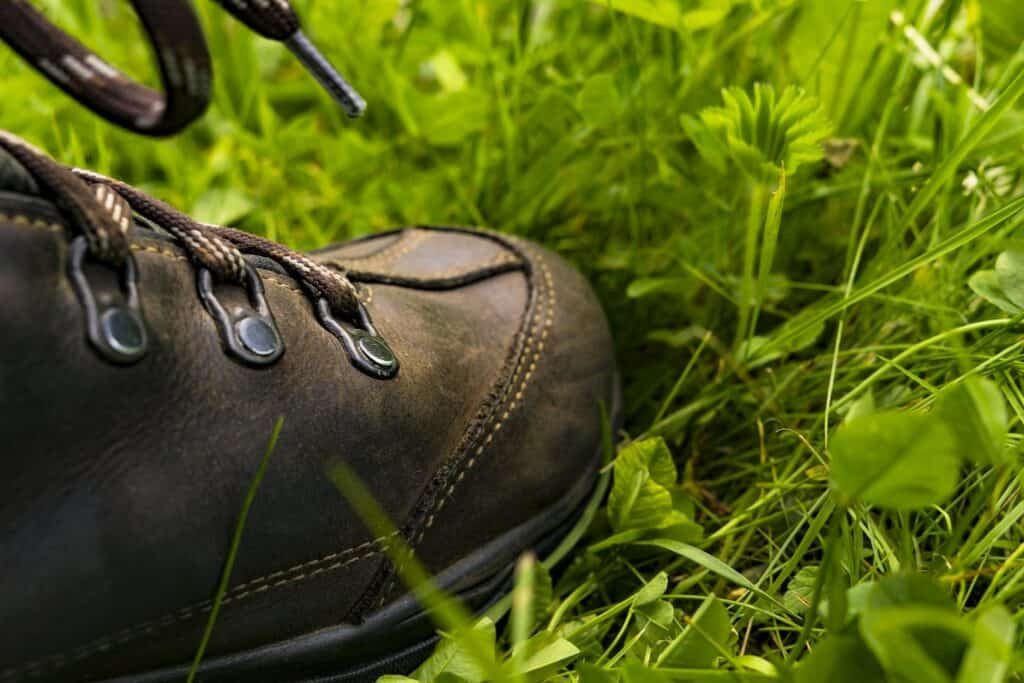Unlock the Benefits of Durable Water Repellent (DWR) Coating

Imagine going on a hike or camping trip, only to get caught in an unexpected rain shower and have your gear drenched. Super frustrating, right? Durable Water Repellent (DWR) coating can be your hero in situations like these, keeping you dry and comfy even when Mother Nature isn’t playing nice. In this blog post, we’ll dive into everything you need to know about DWR – from the science behind it to its historical roots and how it can help prolong the life of your outdoor gear. Don’t forget to also check out our article on Gore-tex, another awesome waterproofing option, to find the perfect fit for your needs.
Key Takeaways
Durable Water repellent (DWR) coatings provide water-resistant protection for outdoor gear, enhancing performance and durability.
Proper maintenance and application of DWR can extend its lifespan up to 3-5 years, while eco-friendly alternatives minimize environmental harm.
By following manufacturer instructions and using sustainable products, you can maximize the performance of your gear with DWR coatings.
Understanding Durable Water Repellent (DWR)

DWR stands for Durable Water Repellency, a chemical coating applied to waterproof breathable rain jackets and other outdoor gear, such as Gore-Tex products, protecting against wet conditions and enhancing the performance of waterproof membranes. The concept of DWR dates back to 1969, with its roots in traditional methods of waterproofing, such as oilcloth used by sailors, fishers, and whalers, and animal fat rubbed into leather by Indigenous people of North and Central America.
In contemporary times, many hardshell jackets, pants, down jackets, and other rain gear items, including the rain jacket itself, incorporate a jacket’s DWR as a key feature.
The Science Behind DWR
The magic of DWR lies in its ability to modify the surface tension of fabrics, causing water droplets to bead up and roll off instead of being absorbed. This not only helps keep the outer layer of your gear dry but also safeguards it from the elements, increasing its longevity and providing more comfortable and enjoyable outdoor experiences.
Traditional DWR coatings contain perfluorinated compounds (PFCs), known to be hazardous to the environment. However, newer eco-friendly DWR options like PFC-free treatments are gaining popularity, offering a durable water-repellent finish with minimal environmental impact.
Common DWR Materials and Brands
When it comes to DWR materials and brands, some offer greater effectiveness and durability than others. Renowned brands like Nikwax and Grangers have proven their worth in treating rain pants, jackets, and other outdoor garments.
Nikwax, for instance, is a highly effective DWR product designed to treat waterproof jackets and softshell ski pants. Choosing well-established brands ensures your gear gets top-notch protection against the elements.
“ItsCherieGonzales includes affiliate links and when you purchase through these links, I may receive a small commission at no additional cost to you. As an Amazon Associate I (ItsCherieGonzales) earn from qualifying purchases.”
The Lifespan and Maintenance of DWR Coatings

DWR coatings are not invincible; they have a limited lifespan influenced by factors like dirt, oil, abrasion, and washing. Understanding when your DWR requires refreshing is fundamental to maintaining its effectiveness and prolonging your gear’s lifespan. Generally, if properly cared for, DWR coatings can remain effective for 3-5 years.
However, with frequent active use, friction, and heat, the DWR coating may degrade more quickly.
Factors Affecting DWR Lifespan
The durability of DWR coatings can be impacted by usage, cleaning methods, and environmental conditions. Frequent usage, and contact with sunscreen lotion, dirt, cleaning agents, insect repellent, and other materials may reduce the longevity of DWR.
Moreover, regular wear and tear due to active use can further shorten DWR’s lifespan. Environmental factors, such as exposure to extreme temperatures, UV rays, and other conditions, can also negatively affect the performance and lifespan of DWR coatings.
Signs Your DWR Needs Refreshing
So, how do you know when it’s time to refresh your DWR? Signs that your DWR needs attention include water absorption, reduced beading, and wetting out of the fabric. If you notice that water no longer beads on the fabric’s surface or the garment feels wet and heavy, it’s probably time to give your DWR some TLC.
Maintaining vigilance and refreshing your DWR as necessary help to guarantee peak performance and prolong the lifespan of your outdoor gear.
Restoring and Reapplying DWR to Your Gear

To restore and reapply DWR to your gear, you’ll need to follow a few simple steps: clean and prep your gear, choose the right DWR product, and apply and cure the DWR treatment.
Investing time in proper restoration and maintenance of your DWR can enhance its performance and prolong your outdoor gear’s life.
Cleaning and Prepping Your Gear
Prior to applying a new DWR treatment, thorough cleaning and prepping of your gear is imperative. This involves removing dirt, oils, and any residue from previous treatments that may interfere with the new DWR coating.
Using gentle detergents and following the manufacturer’s cleaning instructions for your specific gear will help ensure optimal results.
Choosing the Right DWR Product
Selecting the right DWR product for your gear is crucial for effective water repellency. Spray-on and wash-in products are available as aftermarket restorative formulas for DWR. When choosing a DWR product, consider factors such as the type of gear, personal preference, and environmental impact of the wash-in product.
Choosing a product that best fits your needs helps to guarantee the peak performance and durability of your DWR coating.
Applying and Curing DWR Treatments
Once you’ve cleaned and prepped your gear and chosen the right DWR product, it’s time to apply and cure the treatment. Following the manufacturer’s instructions for application and curing is essential for achieving optimal results.
Often, heat application is required to ensure the DWR treatment is properly bonded to the fabric and activated for improved water repellency.
Environmental Considerations of DWR Coatings

Despite the numerous benefits of DWR coatings, awareness of their environmental impact is crucial. Traditional DWRs contain chemicals that can be harmful to the environment.
However, the industry has been moving towards eco-friendly DWR options, providing a more sustainable alternative without sacrificing performance.
Traditional DWR and Environmental Concerns
Traditional DWRs are composed of perfluorinated compounds (PFCs), such as perfluorooctanoic acid (PFOA) and perfluorooctanesulfonic acid (PFOS). These chemicals are known to be persistent in the environment, leading to potential accumulation in the food chain and associated health risks. They are also toxic to aquatic life and can have long-term effects on ecosystems.
As awareness of these concerns grows, DWR formulations are increasingly moving towards sustainable alternatives.
Eco-Friendly DWR Options
Eco-friendly DWR options, such as PFC-free and non-aerosol products, are increasingly popular alternatives that minimize environmental harm while still providing effective water repellency. Brands like Nikwax and Curb by Sciessent offer PFC-free DWR treatments that are both effective and environmentally safe.
Additionally, DWR coatings derived from natural sources and waterproof fabrics made from recycled polyester or regenerated nylon are excellent choices for those seeking sustainable options.
Guide to Identifying and Choosing DWR (Durable Water Repellent) Products
Selecting the right DWR products for your outdoor gear is crucial for ensuring maximum performance and longevity. Here’s a guide to help you make informed choices based on your specific needs and conditions:
- Understand Your Needs:
- Activity Type: Different activities like hiking, skiing, or mountaineering have varying requirements for water repellency.
- Weather Conditions: Consider the typical weather patterns of your region or where you’ll be using the gear. For heavy rain, look for high-grade DWR treatments.
- Research DWR Technologies:
- Materials and Treatments: Understand the various types of DWR coatings, including fluorocarbon-based and newer, more environmentally friendly options.
- Brand-Specific Technologies: Many outdoor brands have proprietary DWR technologies (e.g., Gore-Tex, Nikwax). Research their effectiveness and suitability for your needs.
- Check the Water Repellency Rating:
- Rating System: Look for information on the water repellency rating of the product, which can often be found in product descriptions or technical specs.
- Higher vs. Lower Ratings: Higher ratings generally offer better water protection but may reduce breathability. Choose based on the intensity of exposure to water.
- Consider Breathability:
- Balance with Water Resistance: Especially for active use, find a balance between water resistance and breathability to avoid internal moisture build-up from sweat.
- Check Ventilation Features: Look for additional features like ventilation zips or breathable panels.
- Evaluate Environmental Impact:
- Eco-Friendly Options: Prefer products with eco-friendly DWR treatments that reduce environmental impact, particularly PFC-free options.
- Brand Sustainability Practices: Investigate the brand’s commitment to sustainability and eco-friendly practices.
- Read Reviews and Testimonials:
- User Experience: Check out reviews and forums for first-hand user experiences with the DWR products.
- Performance Over Time: Pay attention to how the product’s water repellency holds up with use and after washing.
Extending the Life of Your Outdoor Gear with DWR

Using DWR coatings can significantly extend the life of your outdoor gear and improve your overall outdoor experience. By offering water resistance and enhanced performance in wet conditions, DWR can protect a variety of gear types, including:
Pants
Tents
Backpacks
This section will delve into the benefits of DWR for outdoor enthusiasts and provide tips to maximize its performance.
Benefits of DWR for Outdoor Enthusiasts
For outdoor enthusiasts, the benefits of DWR are numerous. By providing lightweight, water-resistant protection for various gear types, DWR can help keep you dry and comfortable during your outdoor adventures.
In addition to water resistance, DWR coatings enhance the durability, lightweight, and breathable qualities of outer fabric, ensuring that your outdoor gear remains in top shape for years to come.
Tips for Maximizing DWR Performance
For optimal use of your DWR, here are some important steps to follow:
Regularly inspect and maintain your gear.
Choose environmentally friendly DWR options.
Adhere to proper application and care instructions. By staying vigilant and keeping your gear clean, you can help prevent the buildup of dirt and oils that can compromise DWR performance.
Additionally, opting for eco-friendly DWR products and following manufacturer guidelines for application and curing can ensure that your gear remains water-resistant and ready for your next adventure.
Summary
In conclusion, Durable Water Repellent (DWR) coatings are a game-changer for outdoor enthusiasts, offering water resistance, durability, and enhanced performance in wet conditions. By understanding the science behind DWR, selecting the right product, and following proper care and maintenance guidelines, you can extend the life of your outdoor gear and enjoy your adventures to the fullest. So, gear up, head out, and let DWR work its magic, rain or shine!
Frequently Asked Questions
Is durable water repellent waterproof?
Durable Water Repellent (DWR) coatings are applied to both water-resistant and waterproof jackets. This coating allows water droplets to bead up and roll off, providing a water repellent effect. Therefore, durable water repellent is a form of waterproof protection.
What does a durable water repellent finish mean?
DWR stands for “durable water repellent” and is a chemical treatment applied to garments such as jackets, trousers, tents, and sleeping bags to make them water resistant. The treatment creates a hydrophobic surface which causes water to bead up and roll off the fabric.
How long does durable water repellent last?
The durability of water repellent depends on use but should last 4-6 months with proper treatment and up to 5 years with regular care. DWR can easily last over 10 years if stored and worn properly.
Can you waterproof GORE-TEX?
Gore-Tex can be waterproofed by applying an ultra-thin durable water repellent to its outer layer. However, over time this waterproofing will eventually need to be reapplied to maintain protection from the elements.
How does DWR work?
DWR helps keep fabrics dry by changing their surface tension, causing water droplets to bead up and roll off instead of being absorbed. This provides an extra layer of protection from the elements.






